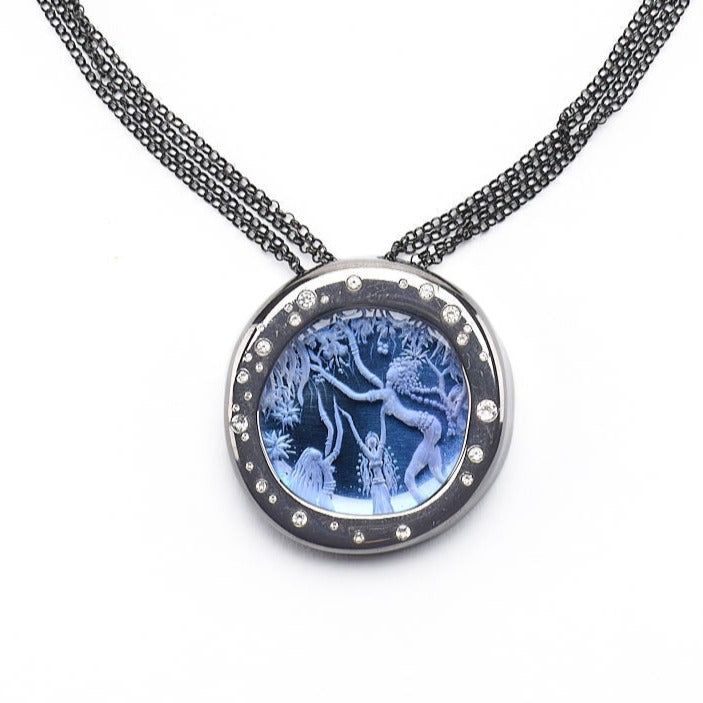"White Goodness of Good Fortune" Engraved White Quartz Necklace
- Free returns
- In stock, ready to ship
- Backordered, shipping soon
One of a kind art jewel, inspired by the Greco-Roman goddess of good luck, Fortuna-Tyche. The goddess is depicted holding in her left hand cornucopia (horn of plenty) and in her right hand a scepter. In Greek mythology, Cornucopia had the divine power to provide unending nourishment and is the symbol of abundance. The Goddess is engraved as walking into the universe, coming towards us to bring in our lives good luck and all her goods.
Hand engraved Reverse Intaglio on a free shape rock crystal piece, shaped and formed exclusively by the nature. Gemstone engraving with diamond microscopic tools. The background is a titanium slice that has become blue and iridescent by the special use of a microflame at 500 C degrees temperature.
Born and raised in Anthens, Greece, Maria Apostolopoulou revives and reinvents the ancient art of Glyptography, specializing in seal stone carving, gem sculpture, reverse intaglio, art medal, and coin engraving. Her limited edition glyptic jewels are exhibited in galleries, museums, and cultural foundations, while also designing jewelry for renown jewelry brands and museum stores. Maria studied the art of Glyptography next to the last European master of glyptic arts, Nick Kielty-Labrinides.
Glyptography is the art of gemstone carving, dating as far back as 15,000 BCE in the form of pictography on cave walls. Pictographs eventually evolved into the earliest known form of writing, cuneiform. Cylinder and Scarab Seals with writing engraved into the stone served as both talismans and tools to seal items. During Alexander the Great's time, Alexandria became known as the birthplace of the Cameo carving, where they remained popular through the decline of the Roman empire and were revived during the Renaissance period.
Early in the 19th century, glyptic arts fell out of favor due to a flooding of the market with forgeries of ancient work. Cameos were still produced, but the emerging photographic arts forced the cameo art to the lowly status of fashion jewelry. The glyptic arts never completely vanished, but there hasn't been a significant market since the Victorian era, making this art form at risk of dying out.
23 inches long, 1.75 inch diameter
This Item is Eligible for Shipping





